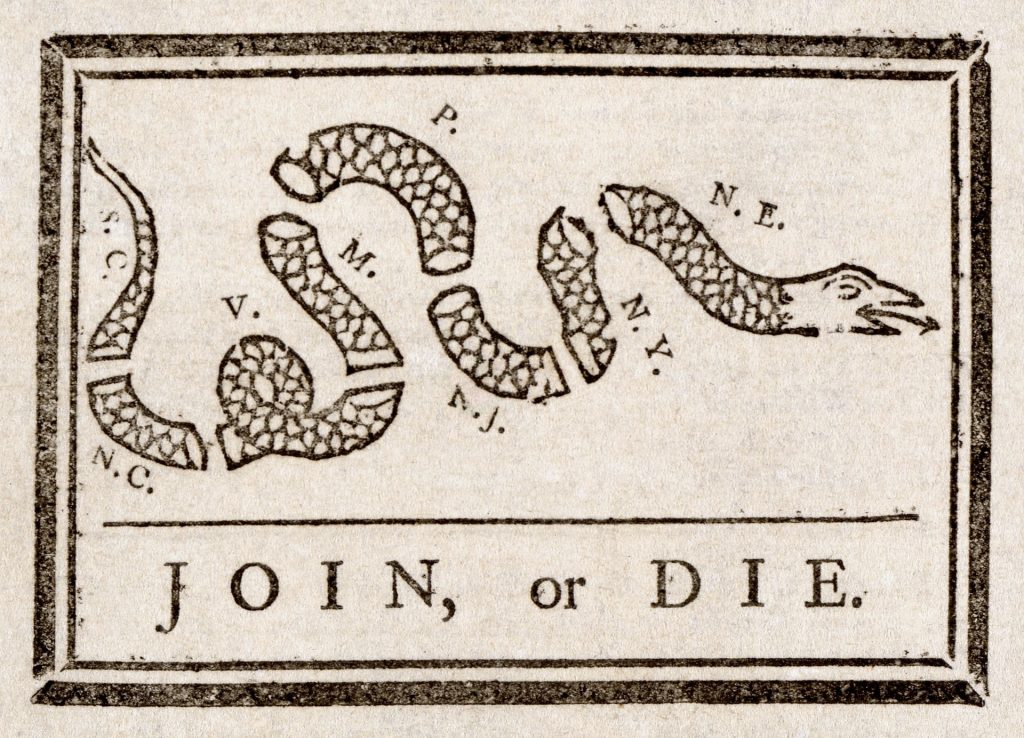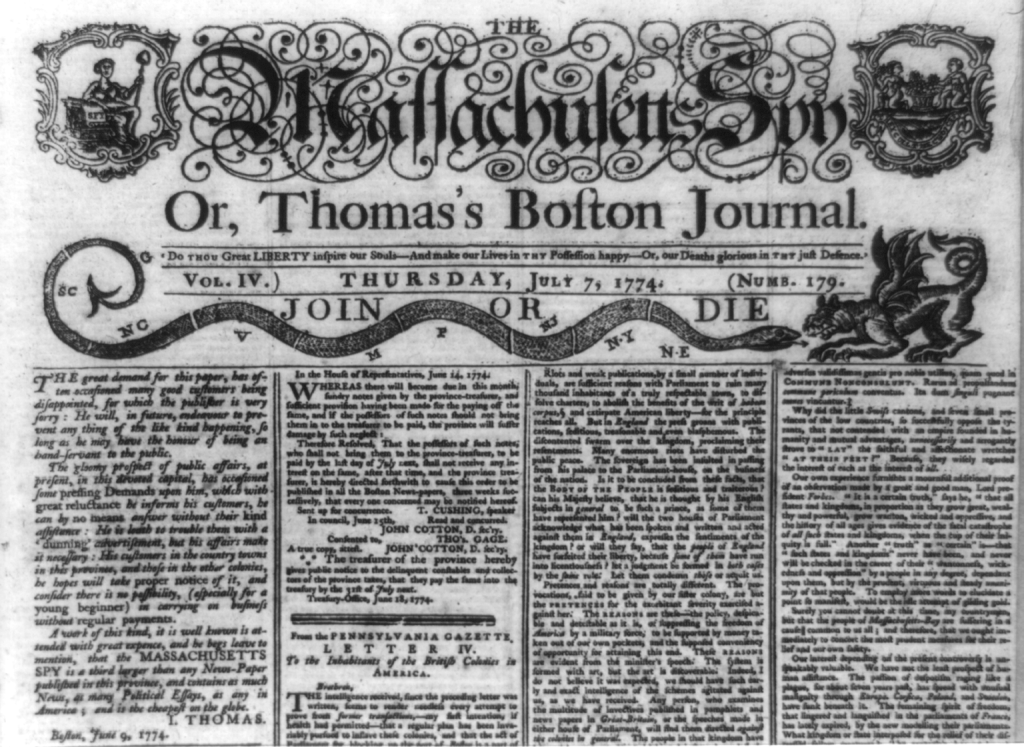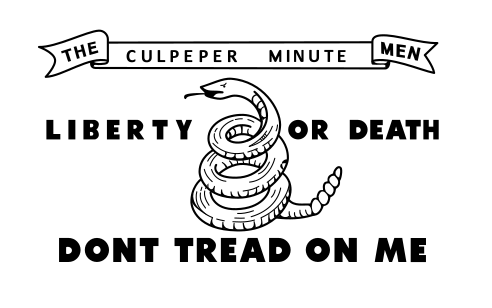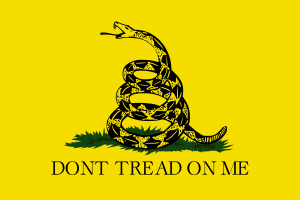Contents
Contents
Origins
Join, or Die is a political cartoon drawn by Benjamin Franklin, originally published in the Pennsylvania Gazette on May 9, 1754.

The cartoon depicts a rattlesnake cut into eight pieces, with each piece representing a specific British colony or region in America.
At the time the cartoon was published, tensions were rising between French and British colonies in America.
These tensions eventually led to the French and Indian War from 1754 to 1763, with the French fighting against the British Army and their American colonies for control of North America, with various Native American tribes supporting each side.
With this cartoon, Franklin was urging for colonial unity in the face of rising conflict with the French. He argued that the colonists must band together and defend their territory as a united force, otherwise they would be easily defeated by the French.
The colonies were represented as a rattlesnake for a few different reasons:
- Rattlesnakes are native to North America, and are not found anywhere else in the world.
- Rattlesnakes only attack in self-defense – Franklin’s message was about colonial self-preservation.
- According to folklore, it was believed that a snake could rejoin together after being cut into pieces, if done soon enough.
The four colonies of New England were combined, and Delaware is not shown, as it was a part of Pennsylvania. Georgia was omitted from the cartoon because it was the newest and least developed British colony at the time, and was seen as less important in the defense against the French.
Franklin created the cartoon as a woodcut, meaning it was carved into the surface of a wooden block.
Significance
Join, or Die was extremely powerful, and the cartoon quickly spread throughout the colonies, being reprinted in other newspapers outside of Pennsylvania.
The cartoon was somewhat controversial, especially among loyalists. It was provocative, and was considered by some to be too militant.
Also, in Christian iconography, snakes often represent sin, temptation, or evil, such as the serpent in the Garden of Eden. Loyalists criticized the cartoon for its depiction of the colonies as an agent of Satan, and also because it was seen to undermine British authority in dictating how best to resist the French.
Despite the controversy, Join, or Die was effective. It helped to turn opinion in Franklin’s favor at the Albany Congress in mid-1754, where Franklin successfully moved for the creation of a unified colonial government, although the resolutions approved by the Congress were mostly ignored by the British.
Join, or Die is the first known representation of the British American colonies as a union, which would eventually go on to become their own country – the United States of America.
The cartoon was also the first use of a rattlesnake as a physical representation of the American colonies, a symbol that would go on to become one of the most significant Patriot propaganda tools of the Revolutionary War.
Indeed, Franklin’s cartoon is most influential in how it was used after the French and Indian War.
After the French were defeated in 1763, symbolism and themes borrowed from Join, or Die were used to urge colonial unity in the face of British overreach, beginning with the Stamp Act in 1765.
This need for unity became increasingly important once the colonies began boycotting British imports, as it was crucial these trade restrictions were followed throughout the colonies for them to be effective. In addition, people in different regions needed to help each other overcome shortages caused by a lack of British-made goods.

The symbolism of the rattlesnake continued to be used to argue that the colonists were defending themselves from British overreach, to emphasize that they were not the aggressors in the conflict.
Themes from Join, or Die were also used in later American history, including during the Civil War, where both the Union and Confederacy used its imagery to call for unity among allied states.
Flag and modern usage
The most famous continued usage of imagery borrowed from Join, or Die is on the Gadsden Flag.
The Gadsden Flag was first flown in late 1775 by Esek Hopkins as a naval banner on his ship, the USS Alfred. The flag is named after its designer, Christopher Gadsden, a Patriot politician from South Carolina.
The snake is shown curled up, ready to strike, and unlike in Franklin’s cartoon, is not cut into pieces, showing that America’s colonies are united, and ready to defend themselves.
The phrase “Don’t tread on me” emphasizes the colonists’ right to self-defense, in a more direct manner than Franklin did in his original woodcut.
Similar messaging and imagery were adopted on other flags throughout the American Revolution and beyond, such as on the Culpeper Flag.

Today, the Gadsden Flag is used by the libertarian and Tea Party political movements in the United States.
Modern symbolism of the flag is similar to its historical usage, except the snake is used as a symbol of resistance against US government tyranny, instead of against the British Crown.
There is also less of an emphasis on state unity and more of an emphasis on individual freedom in how Join, or Die symbolism is used today.


